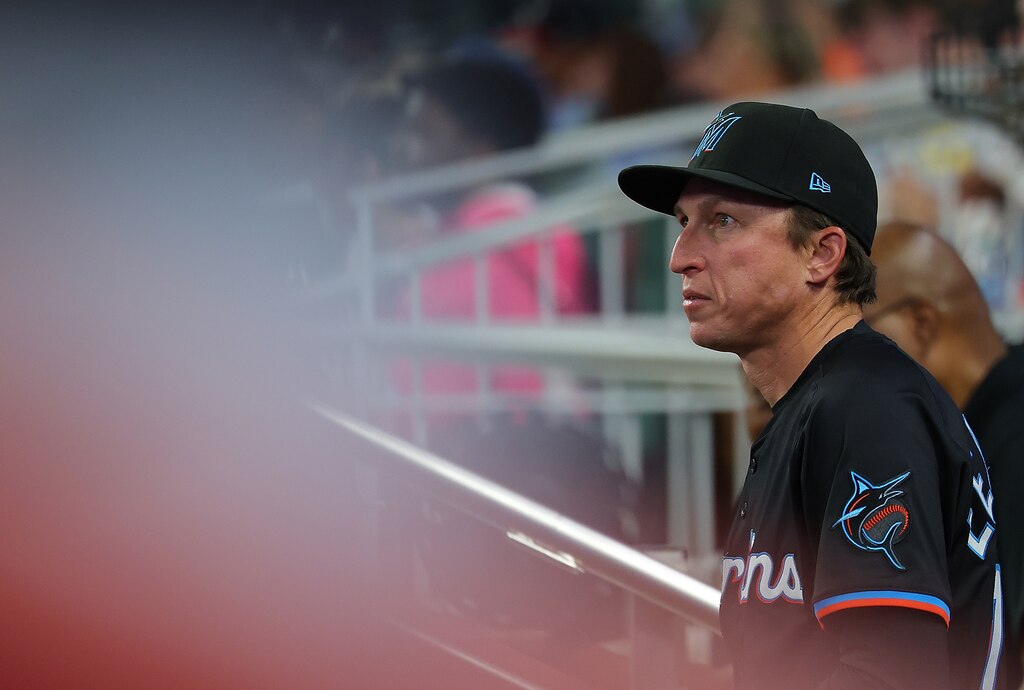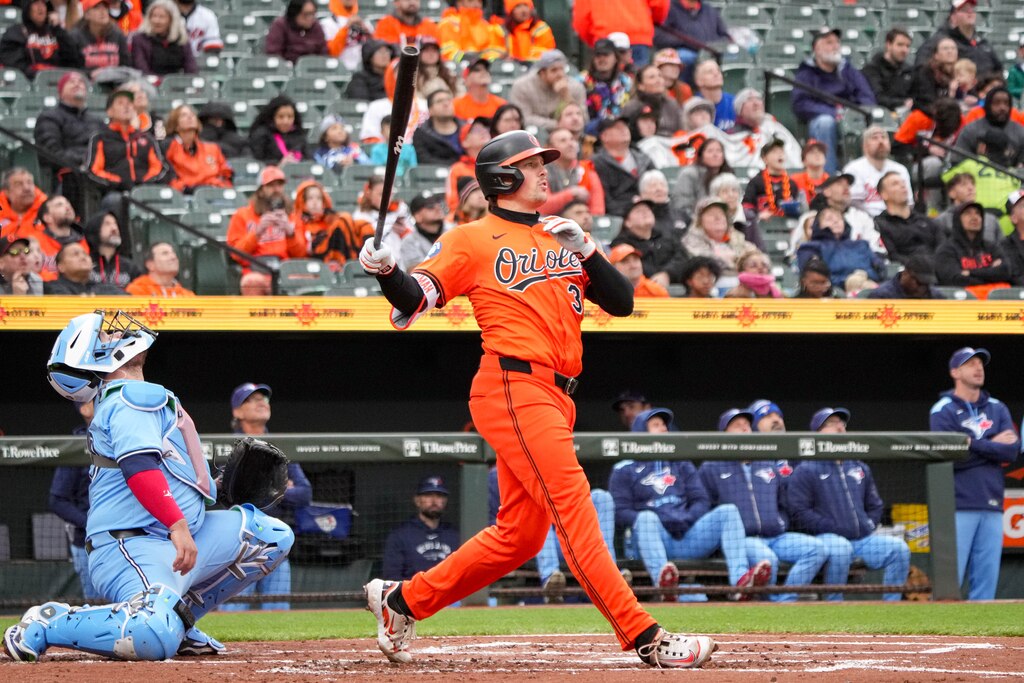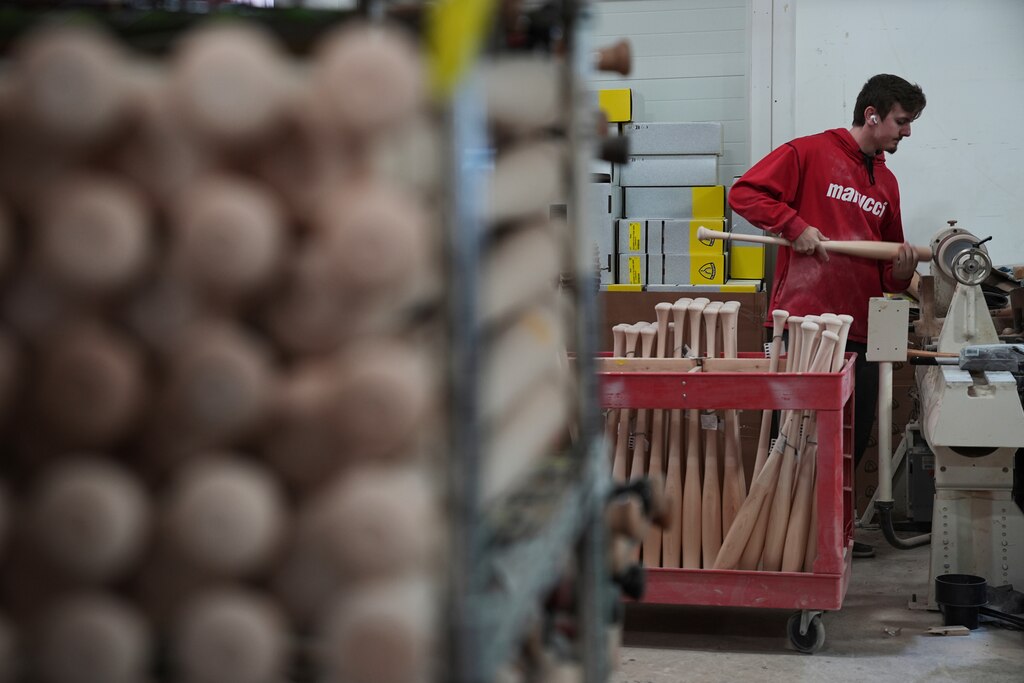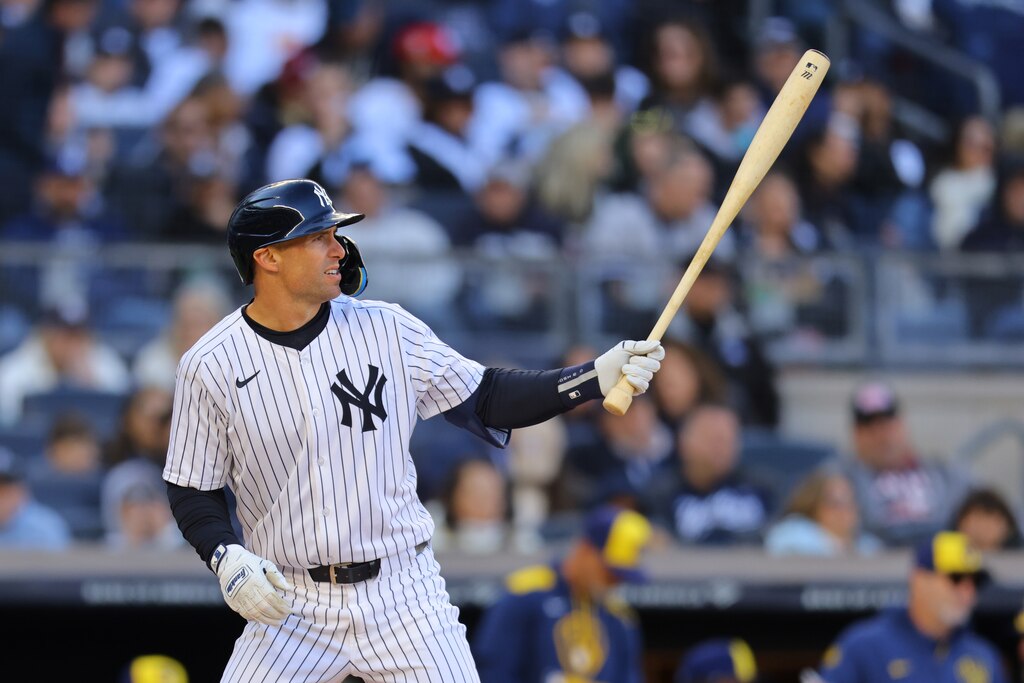Sometime last year, Katie Krall started hearing “whispers.”
Krall, who worked as an analyst for the Cincinnati Reds and coach in the Boston Red Sox organization, had caught wind that ”there were these new individualized ways to not only improve contact rate, but possibly exit velos as well.”
Those rumblings became shouts on March 29, 2025, when the New York Yankees clubbed nine home runs against the Milwaukee Brewers as several players in their star-studded lineup utilized bats with barrels shaped like a candlepin. The YES broadcast brought attention to the new bats, and within hours, they had taken the internet by storm.
That afternoon, Alan Nathan got a text from a member of the Atlanta Braves’ front office asking what the retired professor knew about “torpedo bats.”
The Baltimore Banner thanks its sponsors. Become one.
Nathan got to work, using a model he created in 1998 to predict the performance of these new bats and compare them with a classically shaped bat. He immediately saw some potential advantages to using the bulbous version.
His first thought: “Why didn’t I think of this?”
Nathan is considered a founding father in the study of baseball physics, but it was Aaron Leanhardt, another physicist, who has been credited with bringing torpedo bats to the big stage. Leanhardt was a major-league analyst with the Yankees in 2024 and is now a field coordinator with the Miami Marlins.

“Credit goes to those who take it,” he told The Athletic. “But if people want to ascribe credit to different people, then I’ll take some cut of it.”
The true origin of the torpedo bats may never be revealed publicly. Baltimore Orioles pitching coach Drew French said he first heard about the new design in 2023 while working as the Braves’ bullpen coach. Yankees slugger Giancarlo Stanton even used them at times during the 2024 season. Fans and media members were none the wiser.
The Baltimore Banner thanks its sponsors. Become one.
The Baltimore Orioles were “ahead of the curve” on the unique design, two sources with direct knowledge told The Baltimore Banner. Getting buy-in from the players was more challenging. This winter, though, catcher Adley Rutschman converted to the torpedo bat after manufacturer Marucci sent him three variations of personalized bats to try.
He’s the only regular Orioles hitter to use one, though. Gunnar Henderson and others have tried it out; they’ve stuck with their original models.

Sig Mejdal, the Orioles’ assistant general manager, has been at the forefront of Baltimore’s efforts to augment bat technology. He holds multiple engineering degrees and was employed by NASA and defense contractor Lockheed Martin before working in baseball.
“We’ve been involved with this for a few years,” Mejdal said. “My background is in mechanical engineering, so any mechanical engineer would wonder about the engineering of the bat.”
Will these novel bats catch on? And which players might benefit the most from trying them?
The Baltimore Banner thanks its sponsors. Become one.
Gaining momentum
Picture a sledgehammer. Imagine grasping the instrument by its wooden handle and swinging it as you would a baseball bat. It’s slow and arduous, but packs a punch.
Next, envision flipping the sledgehammer, grasping it by the head and swinging. Now, it moves through the air like a Wiffle ball bat, flailing with ease but not with power.
David Levine, a mechanical engineer with a Ph.D. from the University of Pennsylvania, chose this analogy to explain rotational inertia, a property of any object which can be rotated around a pivot point. In this example, the sledgehammer’s moment of inertia was lowered when it was flipped. In plain English: It became a lot easier to swing.

The same goes for a bat with increased mass close to the handle.
“If you just jump to a less sledgehammer-y bat, and if you go way towards the Wiffle ball bat, you’ll be able to swing the bat faster, which is one of the pros of a torpedo bat in theory,” Levine said.
The Baltimore Banner thanks its sponsors. Become one.
To Nathan, the benefits of increased bat speed are apparent.
“The batter can maybe wait a little bit longer on the pitch to gather more information before deciding what to swing and how to swing,” Nathan said. “The batter can more easily alter the swing in small ways once you begun the swing, as you gather more information on where the pitch is going.”
This has been put in practice before. Cupped bats with wood scooped out of the end of the barrel, which have been around for nearly a century, carry less mass in order to increase swing speed. Puck knob bats, which feature a hockey puck-shaped butt of the handle, have gained popularity within the last few seasons because of the added control they give hitters.
But there’s an obvious trade-off: the more mass you move from the end of the bat, the less powerful the swing. This is why Levine is skeptical torpedo bats will automatically generate higher exit velocities.
“Momentum is mass times velocity,” Levine explained. “So if you reduce the mass of the barrel [from the end of the barrel], you’re going to have a less effective collision with the ball.”
The Baltimore Banner thanks its sponsors. Become one.
While Nathan is hesitant to make proclamations before conducting more tests, his “gut feeling” aligns with Levine’s hypothesis, though he “reserves the right to change that opinion based on testing and more data.”
Still, better bat quickness has its advantages.
“When pitches are throwing in the high 90s or even over 100 miles an hour, you really need good bat quickness,” Nathan said. “You need to be able to to look at the pitch and be able to react very quickly. And if you’re using this new bat in the mode where you’ve got more quickness, that’s a definite advantage.”
Barreling it up
Major League Baseball’s rules for bats are simple.
“The bat shall be a smooth, round stick not more than 2.61 inches in diameter at the thickest part and not more than 42 inches in length,” states Rule 3.02(a). “The bat shall be one piece of solid wood.”
The Baltimore Banner thanks its sponsors. Become one.
Nathan estimates the average big leaguer swings a bat with a diameter around 2.5 inches. But torpedo bats can creep closer to that 2.61 threshold while keeping swing speeds neutral. In doing so, they’ve increased the surface area of the bat’s “sweet spot.”
“That’s what you want a bat to do,” he said. “You want the mass of the hitting instrument to be at the location where you want it to hit, because that’ll be most effective at transferring energy to the ball.”
Increased surface area also increases a hitter’s margin for error. The downside of removing mass from the end of the barrel is also minimal, according to Nathan.
“Balls hit off the end of the bat generally are not very well hit anyway, so why bother?” he said. “You need the end of the bat just to protect the outside part of the plate. But you would be happy as a batter to be able to just fall off such pitches and wait for a pitch you can handle. And so making the mass a little bit smaller there actually increases the chances you’ll probably foul it off right and live for another day.”
But every hitter is different. While power hitters often utilize the sweet spot to yank balls to the pull side, slap hitters pride themselves in their abilities to make solid contact with even the most unhittable pitch. It’s these hitters, Levine believes, that have the most to lose from trying torpedo bats.
“If you have a player that likes to go oppo, or a player that has an approach or particular type of swing mechanics that means their contact point may not be where it’s typically thought to be the place where you want to make contact all the time,” Levin said. “For a player like that, I don’t know if a torpedo bat might make sense.”

The Yankees’ strategy of implementation relied on personalization — studying each player’s swing and creating a model that best suited that motion. Krall, who helped introduce players to ball-tracking technology as a coach, stresses that individualization is paramount.
“Each swing is unique,” she said. “They’re somewhat like a thumbprint. Whether you have a short swing versus a long swing, your bat speed is going to impact the type of bat you may want to use. It’s basically the same concept as getting custom-fit golf clubs right the way that you swing.”
Added Mejdal, the Orioles’ assistant general manager: “This is certainly not for everybody. ... I think bat fitting, bat recommending, has always been a thing as long as there were two different bats to choose from, and that had to be 1876.”
When watching the Yankees swing torpedo bats on the opening weekend, the overt nature of their widened barrel garnered attention. Mejdal said the Orioles’ designs for these bats “have been more subtle.”
The fact that New York’s front office received enthusiastic buy-in from their hitters — who are notoriously superstitious about their bats — to audition the new tech showed just how receptive today’s players are to analysts’ overtures. More than the torpedo bats themselves, it’s that synergy that has seamheads the most excited.
Batters fight back
In the war between hitters and pitchers, hitters are getting their butts kicked.
In 2024, MLB batters posted a combined batting average of .243, tied for the lowest mark in nearly a half-century. Pitchers haven’t allowed more than nine hits per game since 2008, or more than five runs per game since 2000.
The invisible hand of analytics has no doubt helped pitchers reach these heights. The proliferation of ball-tracking technology such as TrackMan allows pitchers to examine and adjust their repertoire with more ease than ever.
Torpedo bats are a sign that hitters are intent on fighting back.
“All the technology that you see these days is mostly aimed towards the pitchers,” Nathan said. “This is the first innovation that’s favored the batters.”
As intriguing as torpedo bats are, they have a ways to go before they take over as the primary tool for hitters. Only a handful of big leaguers are using them, and more data is needed before analysts can make sweeping judgments about their effectiveness in games. There’s a chance torpedo bats will fade, chalked up as a clever but failed experiment.
“I’m curious if, in three months, we’re going to look back on this and say, ‘Remember when torpedo bats were a thing?’” Levine wondered. “But I hope that there’s more exploration of the design space beyond just torpedo.”
Krall, too, sees the benefit of introducing new tech, even if it never reaches a wide audience.
“Even if the torpedo bat itself is not the Rosetta stone, I think that we’re finally going to see more of an equilibrium and more of a restoration to hitting catching up with pitching based on this concept of tailoring the bat to the individual,” she said. “Whether that’s swing versatility, whether that’s finding different ways to combat what pitchers are deploying via their arsenals. I think that the torpedo bat might be a watershed moment, but there’s more to come.”
Baltimore Banner sports reporter Andy Kostka contributed to this story.




Comments
Welcome to The Banner's subscriber-only commenting community. Please review our community guidelines.